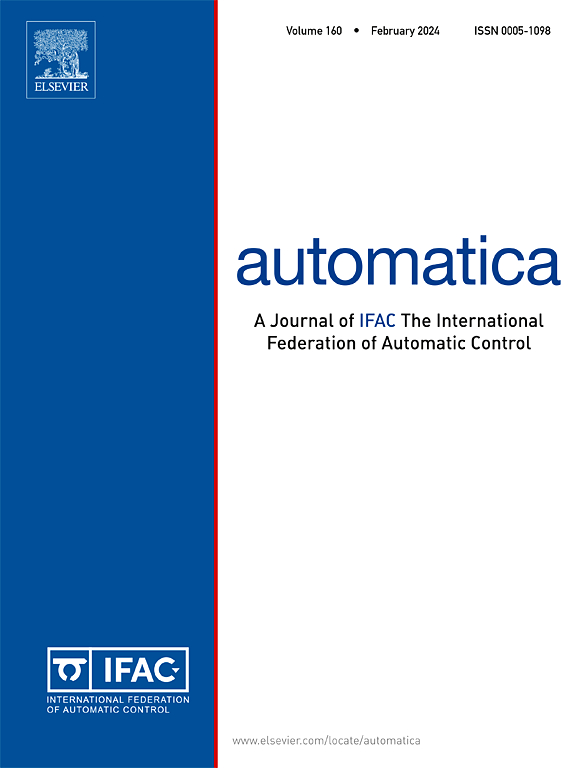同调等价变换下的非奇异合作导引向量场
IF 4.8
2区 计算机科学
Q1 AUTOMATION & CONTROL SYSTEMS
引用次数: 0
摘要
本文介绍了同调等价变换下的非矢量合作导向矢量场的概念。首先,文章推导出一种创新的非矢量导向矢量场,它能够引导受控机器人沿着运动帧中的路径前进。此外,还探讨了同调等价变换的特性,以确定上述矢量场的存在。随后,介绍了基于广泛参数共识协议的合作矢量场,包括对矢量场参数影响的深入分析。然后,通过将其应用于二维和三维场景中的合作路径跟踪,展示了这一创新矢量场的实际应用效果。最后,针对匀速行驶的非自主机器人,介绍了基于引导矢量场的移动路径跟随控制法则,并讨论了速度约束问题。本文章由计算机程序翻译,如有差异,请以英文原文为准。
Non-singular cooperative guiding vector field under a homotopy equivalence transformation
The present article introduces the concept of a non-singular cooperative guiding vector field under a homotopy equivalence transformation. Initially, an innovative non-singular guiding vector field is derived, which is capable of guiding the controlled robot to follow a path in a moving frame. Furthermore, the properties of homotopy equivalence transformation are explored to establish the existence of the aforementioned vector field. Subsequently, a cooperative vector field, based on an extensive parameter consensus protocol, is introduced, including an in-depth analysis of the impact of vector field parameters. Then, the practical implementation of this innovative vector field is demonstrated through its application to cooperative path following in both 2-D and 3-D scenarios, showcasing its effectiveness. Finally, for a non-holonomic robot at constant speed, a moving path following control law based on the guiding vector field is presented, along with a discussion on speed constraint.
求助全文
通过发布文献求助,成功后即可免费获取论文全文。
去求助
来源期刊

Automatica
工程技术-工程:电子与电气
CiteScore
10.70
自引率
7.80%
发文量
617
审稿时长
5 months
期刊介绍:
Automatica is a leading archival publication in the field of systems and control. The field encompasses today a broad set of areas and topics, and is thriving not only within itself but also in terms of its impact on other fields, such as communications, computers, biology, energy and economics. Since its inception in 1963, Automatica has kept abreast with the evolution of the field over the years, and has emerged as a leading publication driving the trends in the field.
After being founded in 1963, Automatica became a journal of the International Federation of Automatic Control (IFAC) in 1969. It features a characteristic blend of theoretical and applied papers of archival, lasting value, reporting cutting edge research results by authors across the globe. It features articles in distinct categories, including regular, brief and survey papers, technical communiqués, correspondence items, as well as reviews on published books of interest to the readership. It occasionally publishes special issues on emerging new topics or established mature topics of interest to a broad audience.
Automatica solicits original high-quality contributions in all the categories listed above, and in all areas of systems and control interpreted in a broad sense and evolving constantly. They may be submitted directly to a subject editor or to the Editor-in-Chief if not sure about the subject area. Editorial procedures in place assure careful, fair, and prompt handling of all submitted articles. Accepted papers appear in the journal in the shortest time feasible given production time constraints.
 求助内容:
求助内容: 应助结果提醒方式:
应助结果提醒方式:


